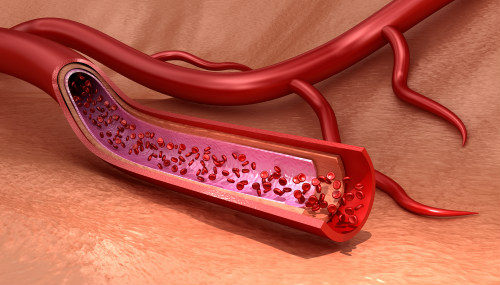San Diego – Though it is well known that mutations of the Janus Kinase 2 (JAK2) gene play an important role in the pathogenesis of essential thrombocythemia, the molecular processes involved in JAK2 activation and regulation -- as well as the specific mechanisms by which JAK2 mutations disrupt hematopoiesis – have largely remained unclear.
Now, however, researchers at the Cincinnati Children's Hospital Medical Center have found that in the compound heterozygous state, the novel germline JAK2 mutations JAK2L815P and JAK2V1123G appear to function cooperatively to increase cell proliferation through activation of the JAK2-STAT pathway in a pair of siblings with the rare blood disorder.
As reported at the 2016 annual meeting of the American Society of Hematology (abstract 3137), the researchers note that most of the mutations identified in hereditary essential thrombocythemia involve thrombopoietin or thrombopoietin receptor genes. To date, only four germline JAK2 mutations have been reported, all of which are inherited in an autosomal dominant pattern.

The investigators began the study by examining signaling in the JAK2-signal transducer and activation of the transcription (STAT) pathway: wild-type and mutated forms of murine JAK2 were transduced into murine pro-B cells (Ba/F3) stably expressing the thrombopoietin receptor (MPL), Ba/F3-MPL cells. Immunoblotting analysis was then performed on Ba/F3-MPL cells that were starved of cytokines overnight and treated with 10 ng/ml thrombopoietin (TPO) or vehicle for five minutes.
They found that at baseline under starved conditions, the JAK2L815P + JAK2V1123G Ba/F3-MPL cells demonstrated increased STAT3 and STAT5 phosphorylation, compared with wild-type JAK2 Ba/F3-MPL cells. Interestingly, however, the JAK2 double mutant Ba/F3-MPL cells had less JAK2, STAT1, and STAT3 phosphorylation in comparison to JAK2V617F Ba/F3-MPL cells at baseline. After thrombopoietin stimulation, both the JAK2 double mutant cells and the JAK2V617F Ba/F3-MPL cells showed increased phosphorylated JAK2, STAT1, and STAT3 compared with the wild-type JAK2 Ba/F3-MPL cells.
The investigators went on to examine JAK2-STAT signaling in the cells of two siblings with essential thrombocythemia by performing immunoblotting analyses of platelets and megakaryocytes grown in vitro from the patients’ CD34 cells. They found that the patients’ platelets demonstrated increased JAK2, STAT1, STAT3, and STAT5 phosphorylation compared with platelets from a normal control, but less JAK2, STAT1, and STAT3 phosphorylation compared with the platelets from a pediatric essential thrombocythemia patient with a known JAK2V617F mutation. “Similarly,” the authors added, “in vitro megakaryocytes from the patients’ CD34 cells showed increased STAT5 activation compared to those from normal volunteers in the unstimulated state.”
Cell proliferative capability was also studied, during which IL-3 dependent Ba/F3 cells were starved of cytokines; viable cells were counted every 24 hours for a total of 72. It was found that the JAK2V617F and JAK2 double mutant Ba/F3-MPL cells proliferated easily without cytokines, and had a large-fold increase at 24, 48, and 72 hours compared with baseline. JAK2L815P + JAK2V1123G Ba/F3-MPL cells also had a significantly higher proliferation rate than JAK2V617F and WT JAK2 Ba/F3-MPL cells. “As expected,” they put in, “the number of viable parental Ba/F3 cells declined over time in the absence of cytokines.”
The final part of the study was to evacuate the cells’ response to ruxolitinib. IL-3 independent Ba/F3-MPL cells were grown under starved conditions in the presence of 0 to 1 mM of the JAK1/JAK2 inhibitor. After 48 hours, the number of viable Ba/F3-MPL cells was measured as a percentage of the dimethylsulfoxide control. The analysis revealed that the 50% inhibitory concentration value was higher in JAK2L815P + JAK2V1123G Ba/F3-MPL cells (147±20 nM) than the JAK2V617F Ba/F3-MPL cells (93±1 nM).
These findings, the investigators concluded, suggest that within the JAK2 dimer in the MPL-JAK2-STAT pathway, monomer-monomer interactions are important in JAK2 activation and regulation. “Additional in vitro and in vivo studies are currently underway to elucidate the exact mechanism(s) of thrombopoietic dysregulation resulting in the siblings’ [essential thrombocythemia] and to gain further insight into JAK2 activation and regulation,” they concluded.
